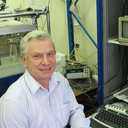Optimizing laser crater enhanced Raman scattering spectroscopy.
Түлхүүр үгс
Хураангуй
The laser crater enhanced Raman scattering (LCERS) spectroscopy technique has been systematically studied for chosen sampling strategy and influence of powder material properties on spectra intensity enhancement. The same nanosecond pulsed solid state Nd:YAG laser (532 nm, 10 ns, 0.1-1.5 mJ/pulse) was used for laser crater production and Raman scattering experiments for l-aspartic acid powder. Increased sampling area inside crater cavity is the key factor for Raman signal improvement for the LCERS technique, thus Raman signal enhancement was studied as a function of numerous experimental parameters including lens-to-sample distance, wavelength (532 and 1064 nm) and laser pulse energy utilized for crater production. Combining laser pulses of 1064 and 532 nm wavelengths for crater ablation was shown to be an effective way for additional LCERS signal improvement. Powder material properties (particle size distribution, powder compactness) were demonstrated to affect LCERS measurements with better results achieved for smaller particles and lower compactness.


